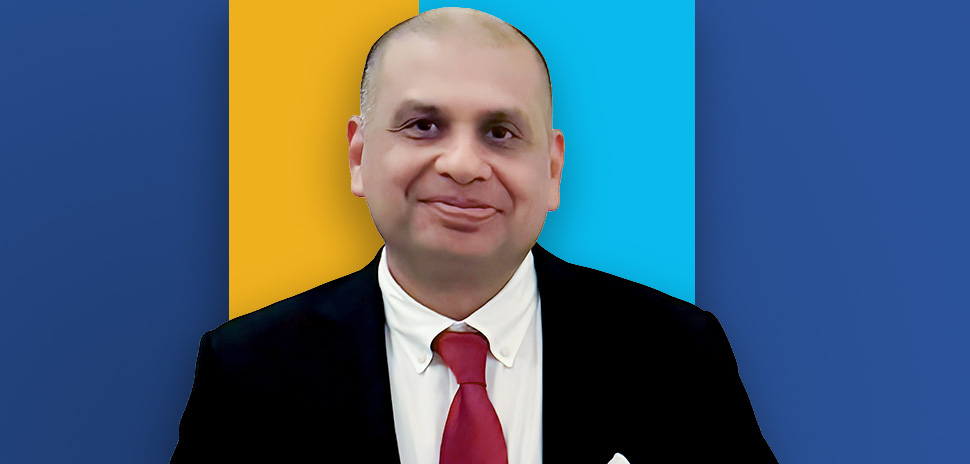Last week, Dallas-based StackPath launched its Edge Computing Containers and Virtual Machines, which will allow customers to deploy their own workloads on any of the company’s 45 edge locations globally.
Edge computing allows data produced by IoT devices to be processed closer to where it was created, rather than sending it over long distances to data centers or clouds. StackPath—which bills itself as having the world’s first secure edge platform—said the launch will allow organizations to analyze critical data in near real-time.
In this Dallas Innovates Q+A with co-founder and CEO Lance Crosby and Chief Product Officer Ben Gabler, the StackPath execs explain how edge computing is going to change everything in the future.
Can you describe ‘containers’ and virtual machines and how they fit into edge computing?
Crosby: Customers can come to our website and select up to 45 locations to create and spin up their containers or virtual machines in seconds from their favorite software repositories like GitHub or GitLab. We deploy and orchestrate all sites chosen into a single VPC with an optional Anycast IP.
Next generation software companies can spin up global infrastructure in a matter of minutes. If you seek to manage kernel mods and upgrades, virtual machines are for you. If you just want to drop in your applications and don’t want to manage the operating system, containers are for you.
If you want to completely remove yourself from all server administration and just want to drop in the code to run at the edge, our serverless EdgeEngine is for you. From start to finish, we have the type of compute for every company.
Gabler: With StackPath supporting containers and VMs at the Edge, users can deploy their workload exactly as they would at a public cloud. This enables users to write very specific applications/micro-services at the Edge to provide near real-time responses to the consumer. This is extremely important when you think about things like device validation in the IoT world. It also allows IoT device manufacturers to save on cost by placing their business logic at the Edge (closer to the devices) rather than backhauling all the way back to a public cloud which also leads to a better user-experience.
What is the difference between a container and a VM?
Crosby: Containers spin up in seconds and require zero operating system maintenance or upgrades. Containers auto scale faster and are the future of all applications. Virtual Machines spin up in under a minute and allow kernel mods and greater control. Virtual machines are a common replacement for hardware or appliance-based solutions.
Gabler: The main difference between containers and VM’s boils down to state. A container is typically used for a stateless/ephemeral workload. An endpoint for collecting metrics may just do some lightweight metric collection and queueing, then publish those computed metrics back to the data warehouse. In this case, the container does not need persisted storage.
Virtual Machines on the other hand, take more of a stateful approach. They may require a very specific OS/Kernel setup as well as persisted disk to run things like databases. However, we are seeing more and more users attach persisted disk volumes to their containers to make things like upgrading software very easy by splitting their software and data layers from one another.
From the end user perspective, what does all of this mean in practice—using edge computing with containers and/or VMs?
Crosby: Today, the end user experience will be faster and seamless. As 5G becomes widely available, there will be a major switch in where applications live. Applications will shift from living on your phone, iPad, TV or other interfaces to the closest edge delivery point.
The proximity of the edge to you will be so close, there won’t be any need to download and store anything locally. You simply will view everything thru an “interface” of some sort—your phone, iPad, PC, TV, smart hub, fridge screen, wall screen, or whatever can connect and act as a viewing object.
Where are the nodes located?
Crosby: StackPath is currently in the largest 45 internet exchanges in the world. We directly connect to 26 transit providers and over 2500 private peers. We are one hop from the eyeball (consumer) networks. We are currently have beta deployments in 5G C-RANS in container datacenters located within the C-RAN. That basically puts us at the base of the next generation 5G tower.
On a high level, could you offer a nutshell description of edge computing?
Gabler: Edge Computing is the next big evolution of computing. Our Secure Edge Platform allows users to deploy their latency critical workloads as close to their users and devices as possible. Users will be able to make decisions based on data consumption up to 2.6x faster than with cloud computing.
Crosby: StackPath offers two separate types of services, 1) a secure edge platform, and 2) high performance security services built on that platform. First, our secure edge platform lives in 45 internet exchanges globally, allowing users to spin up containers, virtual machines, or serverless features in seconds. Stuffed with SSL encryption cards, FPGAs, GPUs, and ultra-high-performance Smart Network Cards, we allow users to offload the heavy crypto workloads to the proper cards while allowing the compute to deliver the data payloads connected directly to the eyeball networks.
The result is faster, higher resolution and more secure end-to-end workloads. Our high-performance security services include a content delivery network, API distribution and protection, software downloads, web application firewalls, DDOS protection, DNS, and advanced monitoring. Everything you need to maximize the end user experience.
How does this fit into cloud computing? Is it just a subset within the overall cloud concept?
Crosby: Edge computing is an extension of cloud computing. The big heavy workloads will still live in the big 5 clouds (AWS, Google, Azure, SoftLayer, Alibaba), but the end user experience portion of the application will be at the edge as close to the end consumer as possible. Applications will be bifurcated where the “heavy lifting” will be in the main clouds and the “presentation layer” will be at the edge.
How important is the rollout of 5G wireless and its expansion of IoT connectivity to making the newly announced StackPath edge platform attractive to corporate customers?
Crosby: 5G is the most important paradigm shift in internet technology since the invention of the internet browser. Today’s fastest LTE networks have maximum speeds of about 100Mbps and 30 to 40ms of latency from the handset or device to the nearest tower.
5G is line of site technology that increases the speeds to 10Gbps and beyond with latency of 1ms from the handset or modem to the nearest tower. That’s a 100x increase in speed and a drop in latency to the bare minimum. Container datacenters living within the 5G C-RAN (cloud-radio access networks) will hold the content any users seek to view. 5G also supports 1 million endpoints (IOT) devices per kilometer, a 1000x multiple over the best LTE deployments in existence.
With that type of endpoint density, every device in your home could potentially directly connect to the 5G network vs going thru a home router. Smart cities, autonomous cars, and everything IOT becomes a reality.
Can you name any customers of the new edge platform? If not, what sort of end-user would find this solution attractive?
Crosby: We don’t have any early customers cleared to release names at this point, but we can tell you the primary industries are 1) security, 2) media, 3) gaming, 4) ad tech, 5) SaaS, 6) IOT, 7) ecommerce, 8) blockchain.
READ NEXT
StackPath Launches Containers, Virtual Machines on the Edge
![]()
Get on the list.
Dallas Innovates, every day.
Sign up to keep your eye on what’s new and next in Dallas-Fort Worth, every day.




























